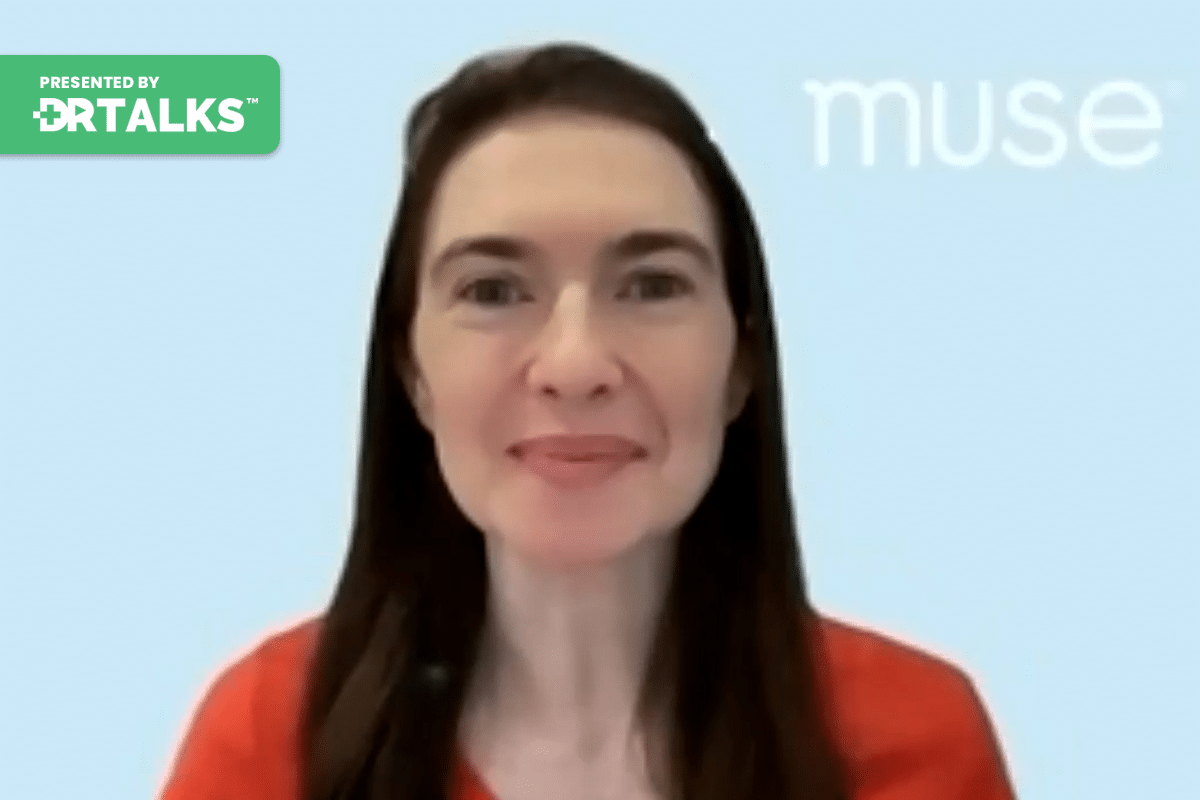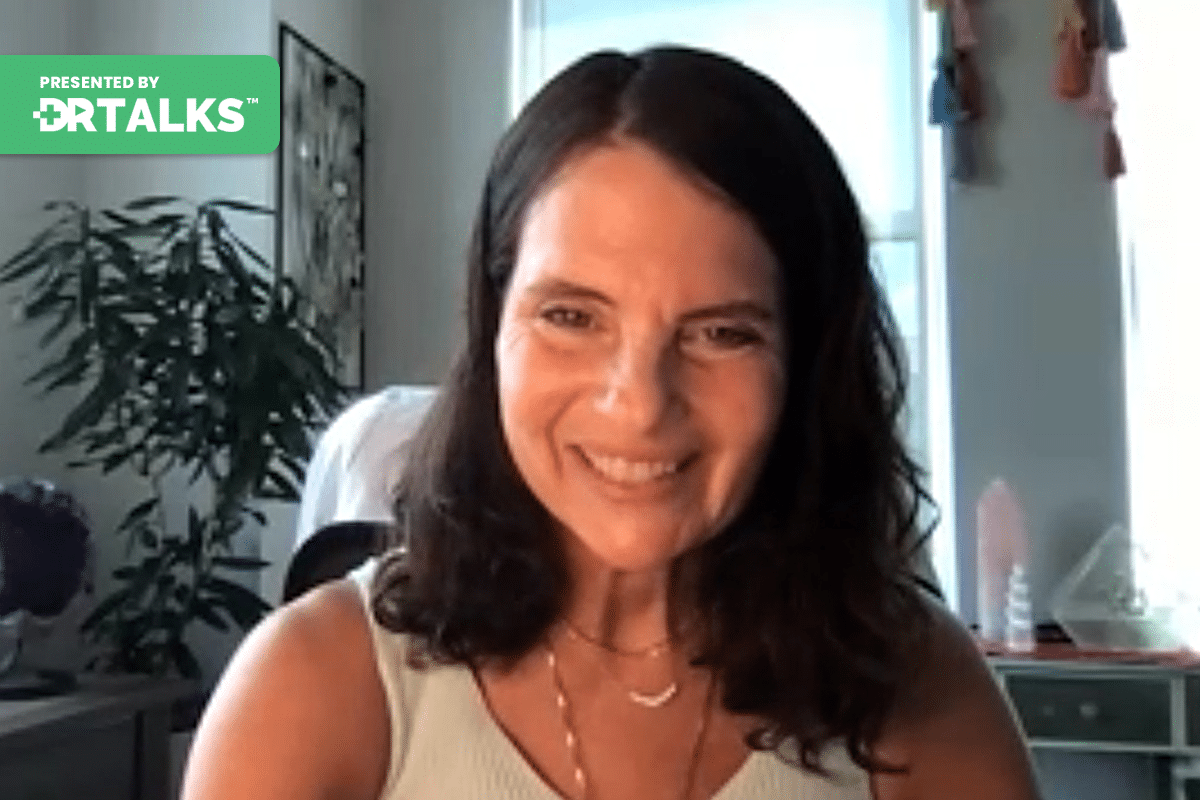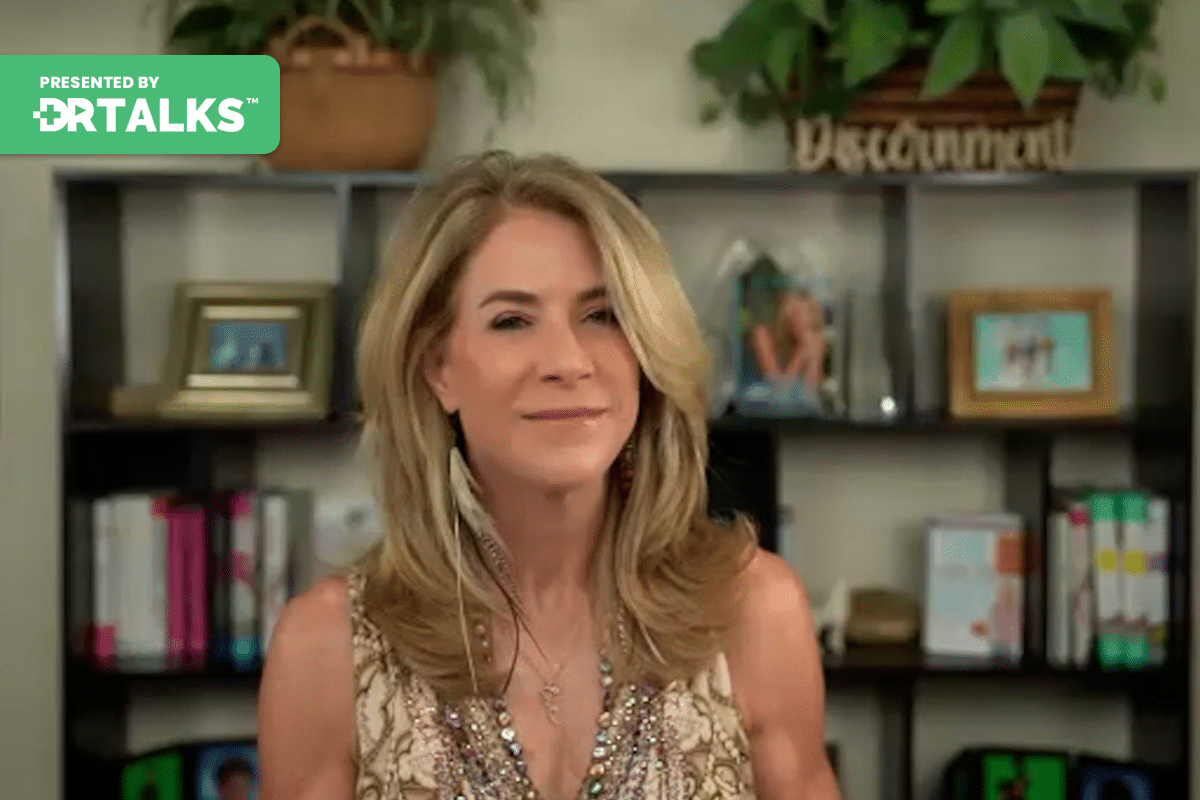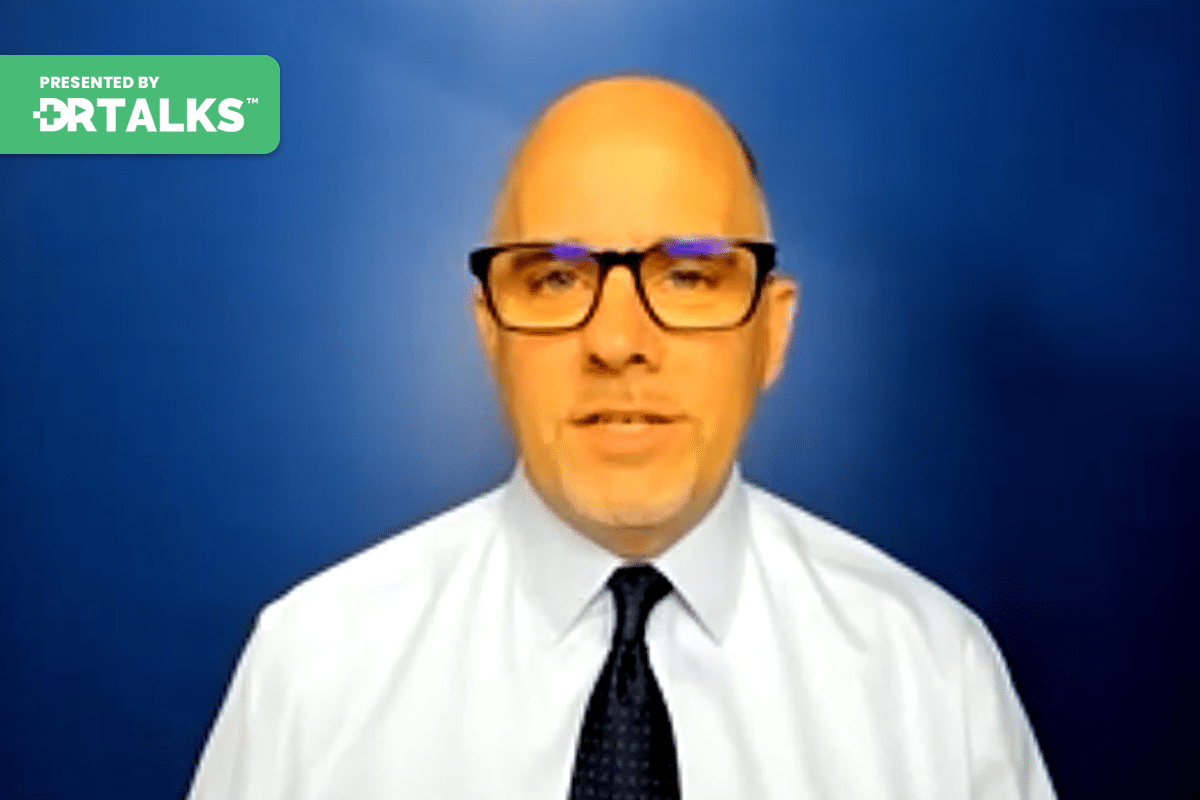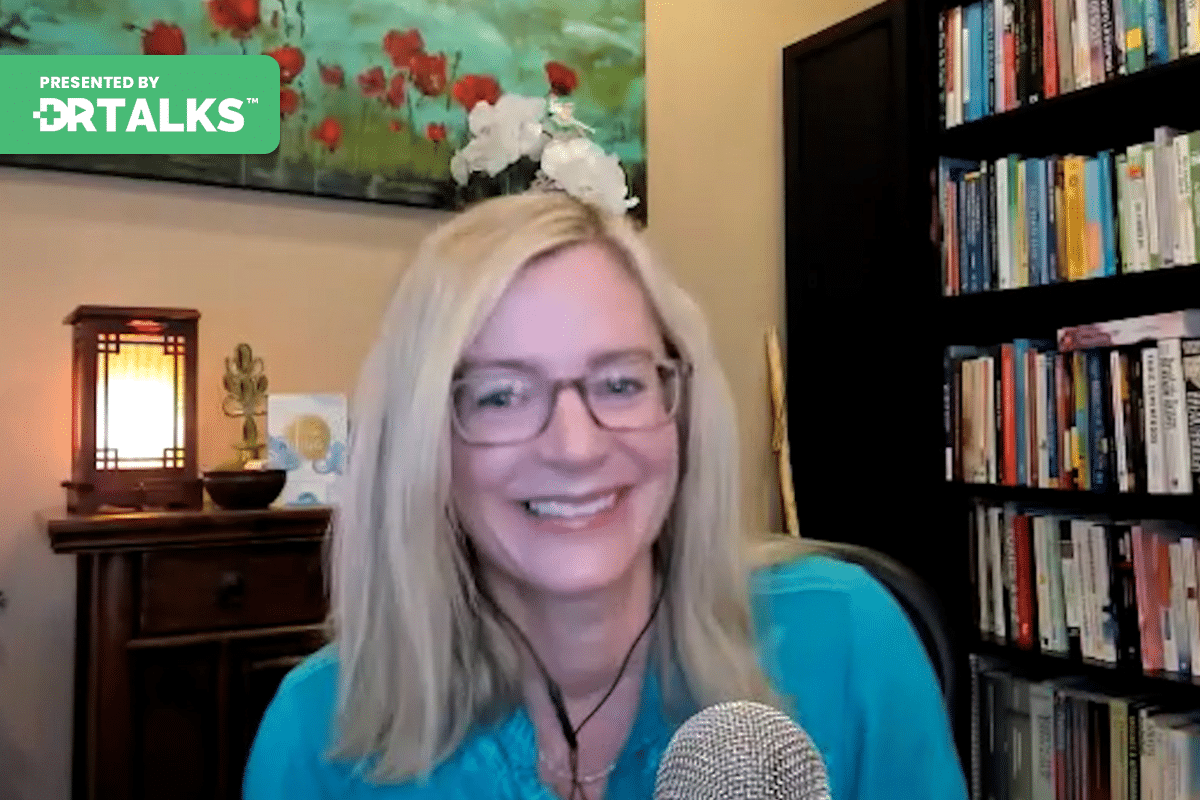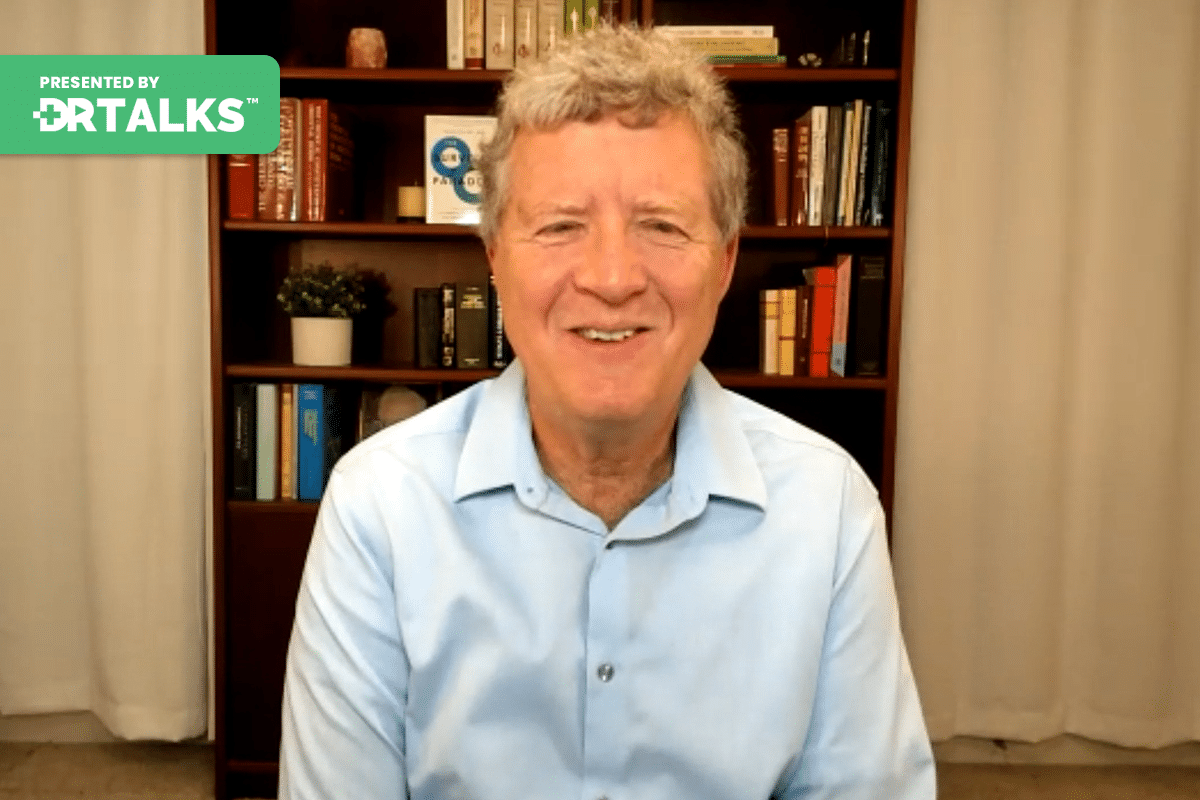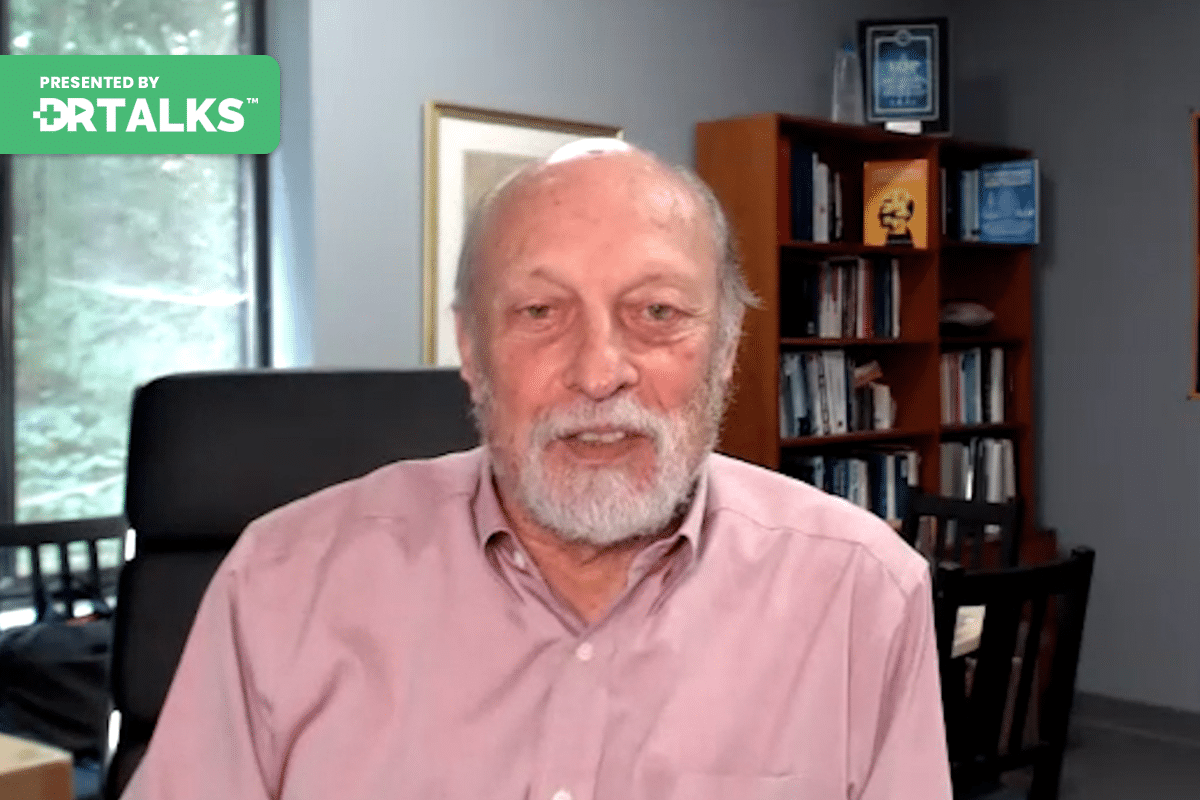Join the discussion below
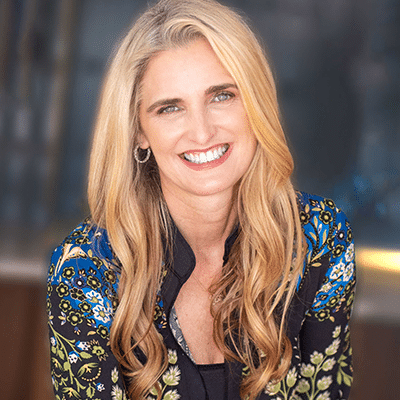
Dr. Ann Shippy is Board Certified in Internal Medicine and Certified in Functional Medicine. She operates a successful private practice in Austin, TX where she is known for her compassionate, attentive, and tireless approach to caring for her patients. She has gained a considerable reputation for successfully diagnosing and treating... Read More
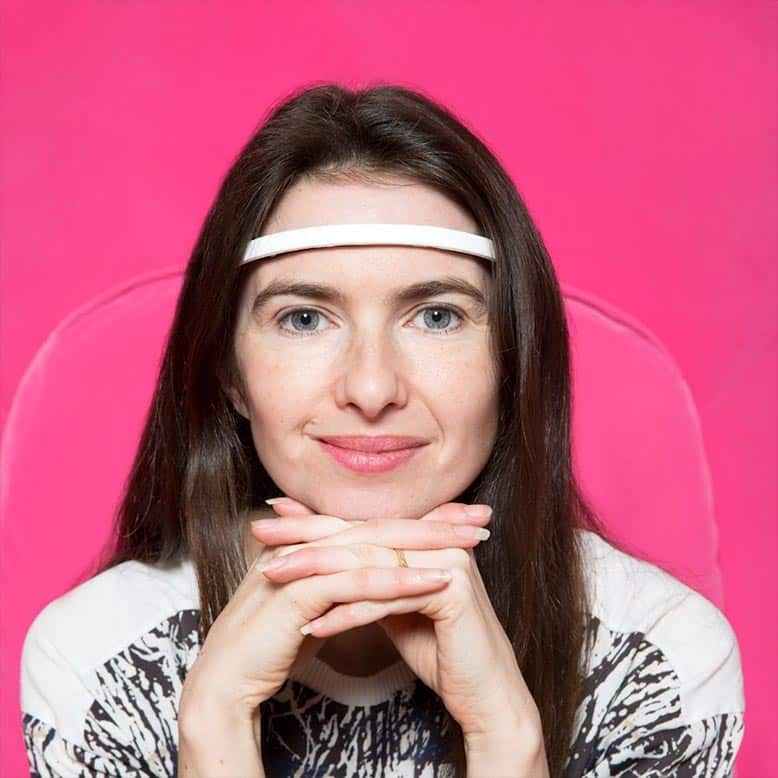
Ariel Garten is the Co-Founder and CEO of Muse, a leading consumer neurotechnology and meditation company. With a background in neuroscience, psychotherapy, and art, Ariel is dedicated to bringing easy-to-use and accessible tools for well-being to the masses. Ariel’s unique background has taken her from working in neuroscience research labs... Read More
- Understand the psychological impact of chronic illness and intense allergies and how they can affect daily life
- Uncover meditation’s power: manage hyperreactivity, rewire brains, and create body balance
- Learn about Muse, a meditation tool designed to help people with chronic illnesses or intense allergies
- This video is part of the Mold, Mycotoxin, and Chronic Illness Summit
Related Topics
Allergies, Brain Activity, Calmness, Cellular Aging, Cellular Change, Chemical Sensitivities, Chronic Illnesses, Cleaning Products, Dust, Environment, Furniture, Grounded, Healing, Leather, Mediation, Meditation Practice, Mold, Moms, Mothers, Paint, Perception, Physiological Reaction, Physiology, Reaction, Retraining, Sleep, Stress, Telomeres, Toxic Exposures, TraumaAnn Shippy, MD
Welcome to the Mold, Mycotoxin, and Chronic Illness Summit. I am your host, Dr. Ann Shippy, and today we get to speak with Ariel Garten. She’s the co-founder of Muse, which is a neurotechnology and meditation company. It’s used by hundreds of thousands of people, including the Mayo Clinic and NASA. Thank you so much for joining us. Ariel, I am so excited for you to share the Muse with our audience.
Ariel Garten
Good morning, Dr. Shippy. Yes, it’s wonderful to be here. I, too, am excited to share about Muse and what it does. This is the device. This is Muse, the brain-cooling headband. It’s an incredible clinical-grade EEG, meaning it tracks your brain as effectively as a research lab would, and it can help you meditate and sleep. It gives you real-time feedback on your brain activity during meditation to help make meditation easy, and then tracks your brain during sleep and gives you interventions to help you sleep better.
Ann Shippy, MD
That is so amazing, and I can’t wait to share my at some point about my story with Muse because it helped to do all that and more. We have an audience that is dealing with a lot of inflammation and just really feels like their bodies are out of balance in so many different ways. Let’s talk about how meditation can help and how the Muse even amplifies the effects of meditation.
Ariel Garten
Just to begin with, I went through my journey with allergies. We call them allergies. There were sensitivities. Who knows what it was, but it resulted in me being reactive to many things in my environment: smells, molds, and foods that I ate. It was a process of being able to shift my relationship to the things around me and change my reactions. That was a phenomenal and tremendous part of my healing. When we talk about meditation and its role in being able to manage some kinds of chronic illnesses, meditation has multiple avenues for being able to help. The most obvious one is that meditation helps you decrease your stress. Being in these situations is relatively stressful. Everything around you can make you feel like it might be a threat or a trigger for your symptoms. With meditation, what you can do is calm your mind, calm your body, and therefore help to calm the reaction. At the most basic level, it’s a tool to downregulate your thoughts and your feelings about a charged situation, and that can be helpful in all aspects of life. So Meditation can help when you are dealing with difficulties like chemical sensitivities, sensitivities to the environment, or feeling overwhelmed by the world. Meditation can help in multiple ways. First of all, meditation makes real changes in your brain and body. We’re all familiar with the concept of meditation as something that can help you relax and decrease your stress. That aspect of it is incredibly useful when you are dealing with a chronic condition. However, meditation has been demonstrated to effect actual cellular change, which is phenomenal. When you are dealing with a stimulus, that can be very scary to use. For example, if you have chronic sensitivities to mold, food, or something in your environment and you are on constant high alert, you are always looking around. Is there some mold here? Might I have a symptom? Oh, no. Is this going to trigger me? That state of high alertness starts to make the whole thing worse. When we’re in a state of high alertness, that means that our body is now covered in cortisol. It means that our body is doing all the things it needs to do to be in fight or flight all the time, which creates the conditions to worsen these kinds of illnesses.
Ann Shippy, MD
It is like a snowball effect. The more you perceive, the more physiologic cycle changes happen to be even more sensitive.
Ariel Garten
Yes.
Ann Shippy, MD
Even meditation alone can start to change those things.
Ariel Garten
Yes. As you begin your practice of meditation, what you are teaching yourself to do is calm your thoughts. When you are in a situation where I am going into a building, is it going to be moldy here? All of a sudden, your brain starts ramping on the fear thoughts, which then trigger the emotional responses to that fear in your body, which then trigger a downstream response of cortisol and an increase in your blood pressure and an increase in your readiness to deal with whatever the threat is, which makes you perceive the threat even more, which becomes this terrible downward spiral. I know because I was in one of these virals; we’ll talk about that later. What we have discovered, what scientists have discovered, is that when you can shift your thinking from one where you are going to be damaged by things, one where there’s a situation out of your control, to a kind of thinking where you are in control, where you can stay calm or you can stay grounded, you change your physiology. There’s an incredible study by Dr. Elizabeth Blackburn.
She’s a Nobel Prize-winning scientist. She and another scientist, Dr. Alissa Apfel, studied mothers who were chronically stressed and caring for chronically ill children. What they found was that these mothers not only had a lot of stress, but their cellular makeup was demonstrating that. They had increased levels of cortisol. They had chemical makeup that was quite unhealthy. When they even looked at the length of their telomeres, the little cap on the end of your DNA, which is a marker for cellular aging, they saw that their telomeres were quite short; stress had cellularly aged them. It was that damaging. When they gave half of these mothers an intervention in meditation, they taught them to meditate, and the mothers meditated daily. What they saw was that not only were they better able to handle the situation, but they felt calm and grounded, and their cellular chemistry had changed. At the cellular level, their telomeres had begun to lengthen, and their cellular aging had begun to reverse. Their bodies were becoming healthier just through a simple meditation practice that allowed them to first shift their mind and then shift their bodies, their physiology, and the illness that was resulting from their stress.
Ann Shippy, MD
That is such a great study because that’s such a worst-case scenario. The situation’s not changing with the children. Seeing how, even in those dire circumstances, you can change your physiology in such a powerful way is amazing.
Ariel Garten
Yes, it’s incredible how you can take control of your reactions to the world. When I think about multiple chemical sensitivities, mold, illness, and these kinds of reactions to the world where you seem to be reacting differently than the people around you, it becomes an incredible opportunity to say that the world is not changing, but people are reacting differently than I am. What can I do to retrain my mind and body to act differently around these things that were previously triggering? That was the greatest key to what happened to me, which was a round of chemical sensitivities and mild reactions.
Ann Shippy, MD
Do you know what triggered it? What brought it all on? Was it stress alone, or was it something more complicated?
Ariel Garten
It was before Muse was a device that existed for the world. In my twenties, I experienced a trauma that led me to have nightmares and led me to kind of be afraid of the world for some time. I was in a period of extreme stress, and that led to my body all of a sudden becoming reactive to the world. It was quite befuddling. I didn’t know what was happening. I didn’t know why. All of a sudden, I was allergic to my cleaning products; I was allergic to the smell of leather; and I was allergic to all of these things. The list of these things began growing and growing and growing. I joked at one point that I was allergic to both the problem and the solution because I’d have reactions to dust and mold and then also have reactions to any cleaning product. It’s like it’s kind of stuck. My scientific mind went about trying to figure out what was wrong. I spent a ton of money now analyzing samples of what was in my house, having mold experts come in and say, Yes, there is a little bit of mold here, but nothing that anybody else should be reacting to. These are safe levels. Everyone else is fine. It then became a process of understanding how I cleaned everything and even moved. I threw out whatever I could that I thought I was reacting to. Things were making me itchy. My list of foods shrank. I tried controlling my environment, but it still wasn’t successful. I continued to react, and what I didn’t realize was that each of those steps that I was taking to control my environment and say, “This clothing is awful. There must be dust or mold in the clothing. Yes, that must be the problem. Or it must be the paint in the house that is the problem. Every time I labeled something as a problem, what it was doing was tagging in my brain and my nervous system to say, “Oh, you are right, this is dangerous.” We’ve gotten rid of all of it. It must be dangerous. Any time we see it again, it’s going to be dangerous. I’d go into a paint the room, and I would feel overwhelmed. I buy a new piece of furniture from IKEA, and I would be like, “I can’t possibly buy that furniture from IKEA. I am going to react to it.”
Ann Shippy, MD
You were telling your body to react. You had done all these things to sort of really minimize the toxic exposures.
Ariel Garten
Yes. It was just spiraling. I was just teaching myself that all these things were harmful and dangerous. It wasn’t until I engaged in a process of calming my mind, calming my body in the presence of these things, and retraining myself to learn that these things are okay. The only main problem was my physiological reaction. When I learned to downregulate that reaction and retrain my relationship to these objects, I was able to heal and now go through the world easily. Somebody just gave us a beautiful gift of Jo Malone’s fragrance. I was shocked at myself when, after smelling it, saying thank you, and enjoying it, I looked back and said, “Oh my God, in the past, that would have been so fearful. It’s like, Oh my God. This is going to make me cough, and I’ll have a headache.” I smelled it this morning when I woke up again, and, like, it smells lovely in here. That was unbelievably shocking to me. I could enjoy the smell.
Ann Shippy, MD
It does show that you’ve moved your system from being on high alert into a neutral place where you can choose to react, like if you smell something burning or something dangerous.
Ariel Garten
Part of the interesting psychology of all of this is that you cause yourself to believe that these things are toxic because you react to them. It was very easy to say, “Oh, well, paint is awful. Of course, it’s not good for you.” I am reacting, but I don’t want to be around this paint. I want to avoid it because it must be bad for my children. It must be bad on the list, or it’s going on because it’s bad for you. The reality is, if a room was painted a month ago, probably it has dissipated sufficiently for it to be a safe place for you and your children and everybody else like it’s okay.
Ann Shippy, MD
There are meters that you can get to measure the biosis. If you want to know, you can measure it.
Ariel Garten
Yes, I agree. But now that’s going into the dangerous territory of re-convincing yourself that there must be a problem. When you are somebody with chemical sensitivities, you are reacting to such a small amount that, at a certain point, you need to say, “People are functioning normally in this world, and it’s okay. My body has mechanisms to process whatever might be left here. It’s okay. The damage that I am doing to my body with this level of reaction is a harmful thing.”
Ann Shippy, MD
Let’s talk about what the Muse provides, how it uses neurofeedback art, and the neuroscience part of things to optimize the meditation process.
Ariel Garten
Muse is quite an incredible tool, and it was a very important part of my healing journey. Learning to meditate has been something that I have been told to do many times in my life. I was a practicing psychotherapist, and I was teaching people to meditate, it was still a very hard practice for me to do because, typically, in meditation, you sit there and your mind bounces all over the place. If you are somebody who’s in the middle of having an anxiety-based experience, it’s really hard to calm your mind, and you are like, “Okay, well, meditation is not for me. I just can’t do it.” What Muse does is give you real-time feedback on your meditation to let you know when you are doing it right. You sit down, you slip on your Muse, and there are sensors on the forehead and behind the ears. These are EEG sensors, and they’re able to track your brain activity in real-time while you are meditating, so you don’t have to guess. Am I meditating? Am I doing this right? The Muse is letting you know. What it does is translate your brain activity into guiding sounds. When you focus your attention on your breath, you are in your meditation; you hear the sounds, get quiet, and it’s lovely and reinforcing to your brain. As your mind wanders away, off into the thoughts, you hear the sounds pick up, and that becomes your cue to say, “Yep, that’s okay. Come back to your breath.” It becomes a lovely and easy way to know that you are meditating and to help you stay there after the fact is to get data, charts, graphs, squares, and other things that show you moment by moment what your brain is doing and help you get even deeper into the process. It teaches you to quiet your mind, to quiet your body, and to be able to react in a much more helpful and healthy way.
Ann Shippy, MD
I know you’ve upgraded this because it goes back to 2016. I was so grateful that I found you in 2016. I’d love to share my chart for what was happening when I was listening to the Rain Forest after I got into mold another time. It wasn’t my most severe one, but I had moved into a new place, and I started getting asthma. That asthma was so bad that in about 80% of the buildings that I went into, I had to leave. It turned out that it was a new place, and they had put carpet down over a floorboard that was still damp, so it was a really bad mold problem. I was grateful for the asthma because it let me know that there was a pretty major problem and that my body was just so alert. Do you want to explain this chart to me? Can you see it?
Ariel Garten
Yes. This is fascinating. What we’re looking at are Dr. Shippy’s results from when she started meditating with Muse back in 2016 and a very early version of Muse. Here, the squiggly line you are seeing is her level of brain activity. When you are at the top, your mind is active. You are thinking you are ruminating; you are in the thinking zone. When you are down at the bottom, you’ve made it into calm. You are in the meditation zone. This is a 20-minute meditation. You can see throughout the meditation a couple of moments when she starts to dip down from active into neutral. But she’s pretty wrapped in this. This was earlier on in your meditation practice.
Ann Shippy, MD
Well, no, the interesting thing about this is that I have been a meditator for decades. This fear of not being able to breathe took me into such a limbic state that I couldn’t meditate like I couldn’t get any birds. In the cold state, it was in, it was very traumatic. Let me show you what happened. I felt like I knew something was off. I stopped this chair, and I found the Muse. I just knew I had believed in it from the beginning. I knew it was going to be my answer to helping me get my brain back into my limbic system. I was so committed. You get up every morning first thing and put the Muse on. If I was running with kids around or whatever, I would do at least five or 10 minutes. But the goal was 20 minutes, and look what happened.
Ariel Garten
This is amazing. Here, what we’re seeing is October 28th, not that much longer after her very first session. The results that we just saw are just a little bit later. You can see that her mind went from active in the last graph down to calm. She’s 98% calm. That means that her brain was focused 98% of the time. This is a 20-minute meditation. You can see she dropped right into meditation. In the beginning, the mind wandered a little, brought it back, and wandered a little towards the end. By 15 minutes, her mind is starting to fatigue a little bit, so she’s not as fully, completely calm. This is incredible. She had 227 birds. One of the lovely parts of the Muse experience is that when you are really in the meditation zone and your mind is quiet, you hear little birds tripping. We just go tweet, tweet, tweet. That is a way to reinforce to your brain that this is the right state. You are here; you are doing it. We’ve seen her Muse take her from an anxious, high-mode alert state to calm and grounded. Amazing.
Ann Shippy, MD
I was so grateful to you because I know meditation has made a difference in my life as an early adopter of meditation. But this changed things for me. Children are the winners. Are our biggest teachers. I felt like after doing this, I could respond to my children differently, like if they did something wrong or were fighting or whatever, I could stay in a calm place, even when there were things that were important that mattered and upset me.
Ariel Garten
Yes. One of the lifelong residual effects of meditation is just that. Meditation was key to my healing journey because I was able to shift my reaction to things in the environment. I would be like, “Okay, well, with this leather, everybody else seems to be okay with it. Maybe I can sit with it; maybe it’s going to be fine.” I’d watch myself react, and I’d sit there and say, “Hey, buddy, hey, mind, this is not helping me. This reaction doesn’t help me at this moment. That can just be calm.” After doing enough of that, it calms. Through the meditation practice, I was able to just downregulate, and then I could take that, as you said, to the kids and the husband. Even this morning, I noted that I have two children now, and they were fighting over something, so I needed to be doing something else at that moment. You watch yourself because the temptation at first is to yell like I do. I can still see the frustration and annoyance rising in me. I can just observe it without doing anything about it. The yell doesn’t come out of my mouth. It’s like I am seeing that that wants to happen. But it just falls away. I can respond very kindly.
It’s interesting how these kinds of experiences can change your reactions to the world because one of the things that I noticed when I was in the reactivity state to the world around me—to the chemicals, to the molds, to everything—was that I started to control other people. And control my husband and the stuff that was happening around me. It made other people crazy. Part of the retraining of my reaction to the world was also the retraining of my relationships with other people because now it wasn’t threatening. When my husband came home with a new shirt that he insisted on wearing, it made my throat feel all scratchy. It was no longer threatening when people did normal things in their lives. I would at first feel the reaction, like, “It’s a new detergent that we laundered your clothing in.” The previous reaction would have been to be pretty freaked out about it and then to take it out on somebody else who brought that detergent in to try to stifle it. It would just rise in me, and I would be so upset and befuddled because this thing was happening and I didn’t want to impose it. But, through the course of the meditation practice, I was able to shift my relationship to the laundry detergent, which everybody else uses. It’s fine. It’s okay. Of course, we still use natural detergent. I was reacting to a natural detergent. Did we just say it was illogical?
Ann Shippy, MD
Some people get to where there’s, like, one brand of natural detergent they can use.
Ariel Garten
Yes. Yes. Mine is lemon. It’s ridiculous. I was able to shift my relationship to the thing and to the relationship with the people in my life who are trying to live their lives normally. I was able to shift my reactions to them and the environment as they related to them. That was so huge.
Ann Shippy, MD
That is beautiful for people who are wondering, like, “Can I meditate? How do I do that? Or I don’t think I can do that. I can’t sit still. I can’t become like,” What advice do you have?
Ariel Garten
First of all, everyone can meditate. Meditation becomes much easier when you realize one important thing: you are not trying to have your mind go blank. This is an important misconception about meditation. Most people think, “All right, I am going to sit down. My mind is going to go blank, and then I am going to look Zen-like, and it’ll be great.” You sit down, and your mind doesn’t go blank because people’s minds don’t just do that. You have thoughts that come in, and then you think you are a bad meditator. First of all, don’t worry about it. You are a great meditator. It’s fine because our minds have thoughts. That is what our brains do. The question is, what do you do when you have that thought? What meditation is teaching you is that it’s not to be a thought; it’s how to retrain your relationship to that thought. When you sit down to meditate and close your eyes the first thought that comes up of the grocery list or whatever standard thoughts come up for you, instead of following that thought, you just say, “Okay, that was a thought that would go.”
The next thought comes up, like, “Oh, no, maybe I am not good at this.” You also have the thought that you are like, “Okay, well, that’s a thought.” The next thought comes up, and the next thought. What you are learning to do is not follow the thoughts, not get hooked on them, and not be hooked on the impact that they have. If you get hooked, that’s okay. You see, I got hooked for a second. I’ll let that go. Meditation is just a process of teaching you to shift your relationship to your thoughts. When you do that, oh my God, does the world get better? From there, you also learn to shift the relationship to the reactions in your body. The tension that you are feeling, the anxiety, the fear—all of those things can begin to be things that you are like. “Okay, well, I am feeling this sensation of tension in my chest, and I am noticing the sensation of fear. That is just a reaction that I am having. I can let that go, too.” That is when you can go. “Oh, okay. Come back down to a calm and grounded place.”
Ann Shippy, MD
That is so beautiful. It is life-changing. How long do most people find it takes to use Muse to start to feel like they are making progress?
Ariel Garten
Most people, over the first few years, have used Muse. You are like, okay, wow. I just heard my mind. Well, I meditate. That is incredible. It’s kind of a mind-blowing experience. Over the first week, even if you do just five, six, or seven minutes of meditation a day, you don’t have to commit to 20 minutes of meditation to get your practice going. You just have to do a small amount each day. Three, four, or five minutes on the first day, the second day, and the third day, all of a sudden you are starting to notice, “Oh, okay, this is what it is. This is the meditation practice.” I’ve had lots of people say I tried to meditate so many times in my life, but it wasn’t until I sat down and used this tool that I got what I was supposed to be doing, which was like, “Oh, right, this is meditating.” From there, by week one, you are starting to notice that the world around you is having a bit of a shifted relationship with it. By week two, you might start to notice, “Hey, in my mind, that was always racing. It seems kind of calmer like it’s the lumped deer in there.” By week three, people around you are probably starting to notice a difference. Your partner might notice it. You might notice the way you are changing with your kids. By week five or six, you are saying, “Okay, this has made such a big impact in my life that I want to do this every day just because when I do it, I feel better like life is better.” That is when you’ve built the habit. From there, it’s a lifelong thing you do because it feels good and makes the world better for you.
Ann Shippy, MD
Do you find a difference in whether people will do it in the morning, midday, evening, or some of both? For those of us who would like to have an optimal practice using the tools, what would you advise?
Ariel Garten
The reality is that the best time to meditate is the time you are going to do it and the way you are going to get it. You are going to get some good morning. Yes. For some people, it’s first thing in the morning because you wake up, and maybe you are up before your family has a little bit of time and space to do it. For some people, doing it in the morning is like pulling teeth. Forget it. There’s no magic to doing it in the morning unless it feels good for you. For other people, doing it in the evening when you’ve come home from work is great because it lets you let go of your workday and become present in your house and your family. For other people, it’s at night before you go to bed after the kids are in bed, and after everyone’s done their stuff. People also report that it helps them sleep better. The time to meditate is when it’s going to work for you and when you are going to be able to do it regularly. Because the key to building any habit is choosing a time when you can do it. Typically, the same time every day is helpful because then you are like, “Oh, it’s part of my routine. You know, I wake up, I brush my teeth, I drink some water, I do my meditation, and I have breakfast.” And it just becomes built into your life. Or every night before I go to bed, I slip it on. I do my meditations, and then I feel nice and cozy, and I fall asleep. Choose the time that works for you so that you can do it every day. That is the magic.
Ann Shippy, MD
I’ve had a lot of patients use the Muse, and sometimes their guides take care of both kids and adults, but the adults will go home with it, and then the kids will want to use it. Any advice for children?
Ariel Garten
Yes. This is very common. Mom brings it home. The whole family starts meditating. Dad, who was never into meditation, is like, “This is a cool gadget. Okay, I’ll try it.” Often, Dad’s meditation is for kids. Technically, we say that it’s for kids 16 and older, although we certainly have had younger individuals use it, and there have been studies demonstrating the benefits of it. Technically, we can’t say it’s for anybody under 16 because we comply with European GDPR compliance. It’s just a compliance question. That said, people who do meditate with their kids find that it is quite effective. I meditate with my son, and it has made a dramatic difference in how he relates to the world and his mind.
Ann Shippy, MD
That is beautiful. I had dinner with my mom and stepdad last night, and he’s 82, and he’s had it every day for two months now. He feels a difference.
Ariel Garten
Oh, that’s amazing.
Ann Shippy, MD
I got it for him a few years ago, and he used it for a little while. What happened was that he got busy. He’s just really recommitted to it because he can tell such a difference. You are not just making a difference for me and my patients, but also for my family.
Ariel Garten
Oh, that’s amazing.
Ann Shippy, MD
I am going to go back out tonight because my mom has one too, and she’s like, I want to start back to this, so let me just go and help her with a tech because she’s 93.
Ariel Garten
Well, congratulations on having such a beautiful mom and stepdad still engaged and going at this age. That is incredible.
Ann Shippy, MD
I am so lucky. Thank you, because I do think that it’s made a huge difference for my stepdad. Any other advice you want to give about getting started with meditation, not being afraid of it, and just really understanding what the possible benefits can be?
Ariel Garten
Meditation is not a wee-woo thing. It is just practice or training that helps you enter healthy and positive mental states. Meditation can be very easy to do. The simplest practice is to focus attention on the breath. If you want to meditate for the first time or if you have an existing practice, one of the easiest ways to meditate is to put your attention on your breath so you can feel your chest rise and fall or your belly expand.
Feel the air coming at your nose. You are just paying attention to your breath. You can count your breaths. One, two, three, four. When your mind wanders away from your breath, then that’s your chance to notice. “Hey, I’ve stopped focusing on my breath. I am not going to choose this thought. I am just going to come back to my breath.” You keep focusing on your breath. Your mind wanders away, and you come on back. For other people, you may be focusing on a word, a mantra, or a prayer. Let’s say you are focusing on that thing. I am love. I am joy, love, and joy. Your mind wanders away. You chose to bring it back. It’s a very simple process. It’s been demonstrated to have an unbelievable impact on the body and the mind. There are thousands of published studies demonstrating the impact of meditation on your brain, your body, chronic illness, anxiety, and depression. It’s extraordinary. Even with the news, we’ve had over 200 published papers. The Mayo Clinic, for example, uses me because they first started using me with their breast cancer patients in 2015, and they published a paper demonstrating that using me for as little as three minutes a day was able to decrease the stress and fatigue in the cancer care process. Then that was so effective that they’ve gone on to do additional studies for use with long-term COVID. Those results will be published very shortly, and they are enthusiastic about them. They’ve used it for chronic fatigue syndrome and fibromyalgia. It’s been incredible to see how Muse has been able to transform. They now use it with their doctors. They did another study with doctors on the front lines, using Muse to improve their resilience and decrease their burnout.
Ann Shippy, MD
So much time. It’s just like the last few years. That is awesome.
Ariel Garten
Yes, it’s been amazing. Now we’re seeing other hospitals use it with their doctors. It’s incredible. The most important thing to know about meditation is that it’s not hard to do. You just stick with it, do it regularly, and, bit by bit, see the change in your life. You will notice shifts not only in your reactions to the world but also in your reactions to yourself, your reactions to your family, your health, and your happiness. It’s life-changing.
Ann Shippy, MD
Everything you want to improve resilience.
Ariel Garten
Yes, You just have to stick with it.
Ann Shippy, MD
That is beautiful. I know you have a couple of different products if you want to just kind of help people who are thinking about getting one and know which one to purchase.
Ariel Garten
We have two different Muses. One is the Muse that you have, which is Muse 2. It’s a thin little device that slips back on your ears and that has the EEG neurofeedback that we’ve been talking about, as well as programs for the heart, the breath, and the body. You can do meditations for your brain, your heart, your breath, and your body. It teaches you breathing meditations that will calm down your physiology. It teaches you how to listen to your heart, which then becomes a cue that you can use when you are rapt to be able to calm it down further. We have it, and it has hundreds of guided meditations. When you get the subscription, they are meditations for anything that comes up in your life. You have a stressful relationship, you have a job interview, and you want to do better at the gym like we have meditations for all of it. If you have difficulty sleeping, this is our newest device, the Muse S. It’s soft and comfortable, and it has all of the meditation practices that come with the Muse 2. It also provides sleep intervention. It tracks your sleep as effectively as a sleep lab. We have a set of researchers that have been using Muse for sleep studies in the wild, the Canadian Association for Degenerative Diseases. They’ve been running a huge study with Muse on elderly adults. Muse allows you to fall asleep faster using what we call the digital sleeping pill and smart fade technology. As you slip on the Muse, it allows you to listen to a meditation or a soundscape and walks your brain into sleep. A lot of people have difficulty falling asleep. Muse was designed to make it easier to fall asleep, and if you wear it throughout the night, it makes it easier to fall back asleep. A recent study by the Brain and Mind Institute demonstrated that it improved sleep quality by 20%.
Ann Shippy, MD
Since sleep is so integral to being able to heal, that’s so important.
Ariel Garten
Yes.
Ann Shippy, MD
Yes. How do people find you?
Ariel Garten
You can find all things Muse at chooseMuse.com, C H O O S E M U S E.com. I think there is a special link from you, and we have a special gift for your audience, which is 20% off and a free subscription that gives you access to all of the content that we’ve been talking about.
Ann Shippy, MD
That is great. I think that’s choosemuse.com/heal
Ariel Garten
Sounds good. choosemuse.com/heal
Ann Shippy, MD
Well, and then you have a podcast.
Ariel Garten
Yes. I am the co-host of an amazing podcast called Untangle, where we talk about all things brain, mind, and healing. You can check that out on the Untangled podcast.
Ann Shippy, MD
Well, thank you so much for joining me. Thank you so much for all the information you’ve given me in my life and for helping me to help people heal. I am so grateful for your brilliance and all the hard work you put into really coming up with this technology that is so innovative and so powerful. Thank you so much.
Ariel Garten
Oh, that’s wonderful. Thank you for sharing it and helping so many people heal. We’re all on the journey of putting our minds and bodies into their best possible shape so that we can be present for the people in our lives that we love and present for ourselves. Thank you for helping us on this journey.
Ann Shippy, MD
Thank you.
Downloads

